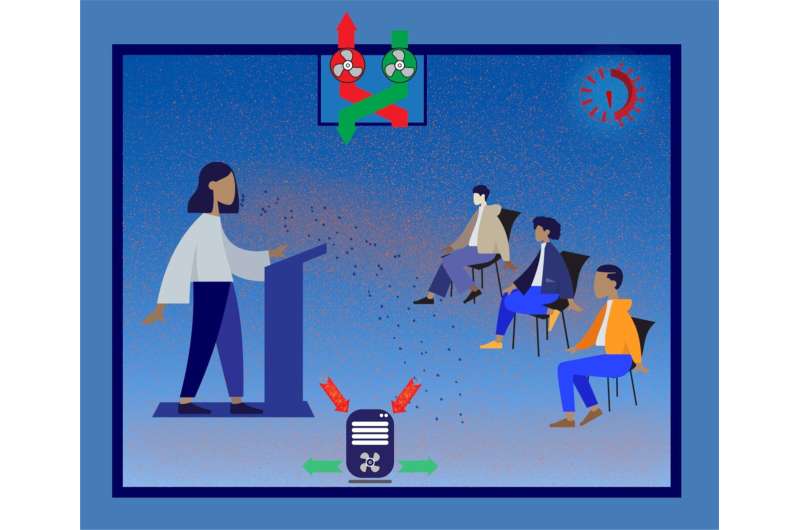
Having good safety measures at schools is very important as children start going back to the classroom. But which measures are most effective at optimizing health and safety conditions and preventing the spread of COVID-19 in school settings?
In a new pre-print study on medRxiv, researchers from various institutes including the Institute of Global Health (IGH) at the University of Geneva (UNIGE) and CERN used the CARA tool to model the concentration profiles of potential airborne viruses in a classroom of 160 m3 containing one infectious individual. A comprehensive analysis was conducted in order to find optimal solutions in different scenarios. It found, for instance, that natural ventilation—while a necessary measure—is more effective in winter than in summer.
“Our results show natural ventilation by opening windows, face masks and HEPA filtration to be most effective, when used in combination and complemented by additional measures like physical distancing, contact tracing and vaccination,” says the IGH’s Olivia Keiser, one of the researchers in the study, who has also participated in the Swiss National COVID-19 Science Task Force.
CARA was initially used at CERN to inform space-management decisions on the CERN sites.
“CARA is an easy-to-use tool, which CERN has made openly available. The original idea of CARA came from wanting to investigate the risks of working in shared spaces. Over time, the tool was further optimized thanks to the expertise of different departments at CERN and with the help of worldwide experts in infectious diseases,” says Andre Henriques, head developer of CARA from the Occupational Health and Safety and Environmental Protection (HSE) unit at CERN.
CERN’s know-how was key in developing the physical model of CARA, but with institutes like IGH bringing their extensive expertise in epidemiology and public health to the table, it is possible to exploit the potential of the tool for wider applications.
“With CERN’s technological expertise and our experience in health studies, the results from the study will be highly useful in deciding on targeted technical solutions that can help balance safety with a better school going experience,” says Jennifer Villers, an MSc student at UNIGE and the main author of the study.
Source: Read Full Article
